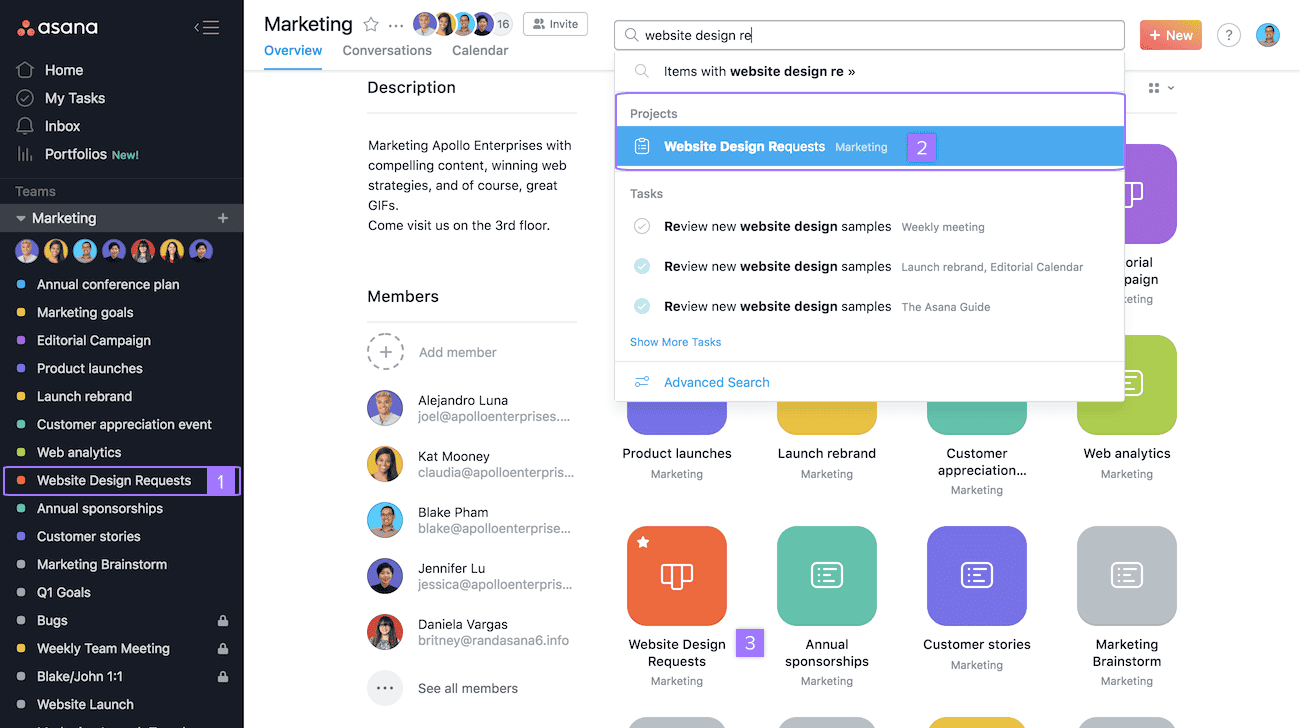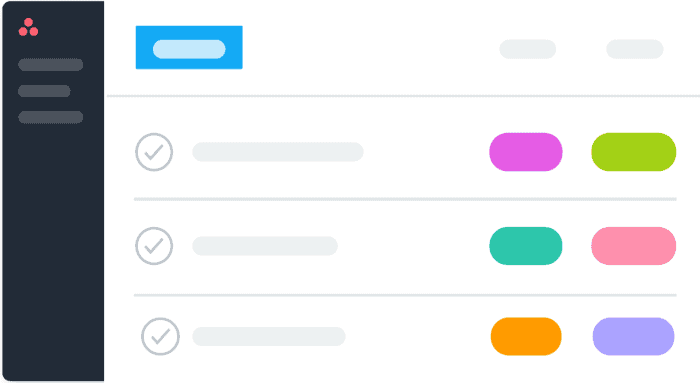
In today’s fast-paced business environment, project management challenges are more complex and demanding than ever. Teams are expected to collaborate seamlessly, meet tight deadlines, and deliver exceptional results, often across different time zones and work cultures. Amidst these escalating demands, Asana emerges not just as a solution but as a revolutionary tool redefining the landscape of project management. With its intuitive design and robust features, Asana stands at the forefront of this evolution, promising to transform how teams interact, plan, and execute their projects. This article argues that Asana’s user-friendly interface, versatile features, and unprecedented ability to enhance team collaboration and productivity make it an unparalleled tool in project management.
Suggested articles: The Pros and Cons of using Asana Software | Asana Pricing Plans & Costs Guide
Asana Project Management: An Overview
Asana, at its core, is a web and mobile application designed to help teams organize, track, and manage their work. Conceived in 2008 by Facebook co-founder Dustin Moskovitz and former engineer Justin Rosenstein, Asana was their answer to the inefficiencies they witnessed in team collaboration and task management. Since its public launch in 2011, Asana has rapidly grown into one of the most popular project management tools, lauded for its simplicity, versatility, and effectiveness. At its most basic, Asana allows teams to create projects, assign tasks, set deadlines, and communicate about work in one place. However, these features, seamless integration, intuitive interface, and powerful customization capabilities set Asana apart. Whether it’s a small startup or a global enterprise, Asana’s scalable platform is designed to cater to the diverse needs of any team, making it an indispensable tool in the arsenal of modern project management.

Asana User-Friendly Interface
The cornerstone of any effective project management tool is its usability. Asana understands this and offers a user-friendly interface that demystifies project management, making it accessible even to those with little technical expertise. Unlike other platforms often overwhelmed by complexity, Asana’s clean design and intuitive navigation invite user engagement. The platform simplifies task management through a straightforward drag-and-drop interface, allowing users to organize tasks, adjust deadlines, and change priorities easily. Moreover, Asana’s visual project timelines and structured dashboards provide at-a-glance insight into project progress, ensuring that every team member stays aligned and informed. This ease of use streames project management processes and fosters a more inclusive and collaborative work environment where all team members can contribute effectively.

Asana Versatility of Features
Asana’s strength lies in its versatility, offering a wide array of features that cater to the diverse needs of different projects and teams. From simple task assignments to complex project planning, Asana’s toolkit is comprehensive and adaptable. Key features include task assignments, which allow managers to delegate work clearly and efficiently, and timelines, which provide a visual overview of a project’s schedule and dependencies. The platform also offers integrated calendars, enabling teams to track deadlines and milestones effectively. Furthermore, Asana’s integration capabilities with other tools like Slack, Google Drive, and Microsoft Teams create a seamless workflow, ensuring that all relevant information is centralized and accessible. These features are not mere add-ons but integral to Asana’s ability to adapt to various project types, from marketing campaigns to product launches, making it a versatile tool in any project manager’s arsenal.
If you want to boost your Asana experience, try Bridge24 for Asana.
Asana’s Impact on Productivity
The ultimate measure of any project management tool is its impact on productivity, and here, Asana truly shines. By streamlining task management and enhancing team collaboration, Asana significantly reduces the time and effort spent on organizing and communicating about work. This efficiency gain translates into more time for teams to focus on the actual work, driving productivity upwards. Studies and user testimonials consistently report a marked improvement in productivity after implementing Asana. Teams find that they can manage their workloads more effectively, meet deadlines more consistently, and reduce the stress and chaos often associated with complex projects. In essence, Asana does not just manage projects; it optimizes them, enabling teams to achieve more in less time.
Asana Criticisms and Limitations
While Asana is a powerful tool in project management, it is not without its criticisms and limitations. Some users point out that for very large or complex projects, Asana can become overwhelming, with its multitude of tasks and subtasks leading to a cluttered interface. Additionally, while Asana offers a range of integrations, there are still some tools and platforms with which it does not seamlessly integrate, potentially hindering workflow in specific environments. Moreover, smaller teams or startups might find the pricing model of Asana’s premium features a bit steep. However, it’s important to note that Asana continually evolves, regularly updating its platform to address user feedback. Recent updates have focused on improving scalability and integration capabilities, and the pricing structure has been adjusted over time to offer more flexibility. These efforts demonstrate Asana’s commitment to addressing the evolving needs of its users and maintaining its position as a leading project management tool.
Conclusion
In conclusion, Asana stands out in the crowded field of project management tools due to its user-friendly interface, versatility, collaboration-enhancing features, and significant impact on team productivity. While there are criticisms and limitations, as with any tool, Asana’s continuous improvements and responsiveness to user feedback highlight its dedication to excellence in project management. Looking forward, Asana is well-positioned to maintain its role as a crucial tool for teams seeking to navigate the complexities of modern project management. Its ability to adapt to the changing needs of businesses and teams worldwide makes it not just a tool for today, but a platform for the future of efficient, collaborative, and productive work.
Daniel Raymond, a project manager with over 20 years of experience, is the former CEO of a successful software company called Websystems. With a strong background in managing complex projects, he applied his expertise to develop AceProject.com and Bridge24.com, innovative project management tools designed to streamline processes and improve productivity. Throughout his career, Daniel has consistently demonstrated a commitment to excellence and a passion for empowering teams to achieve their goals.